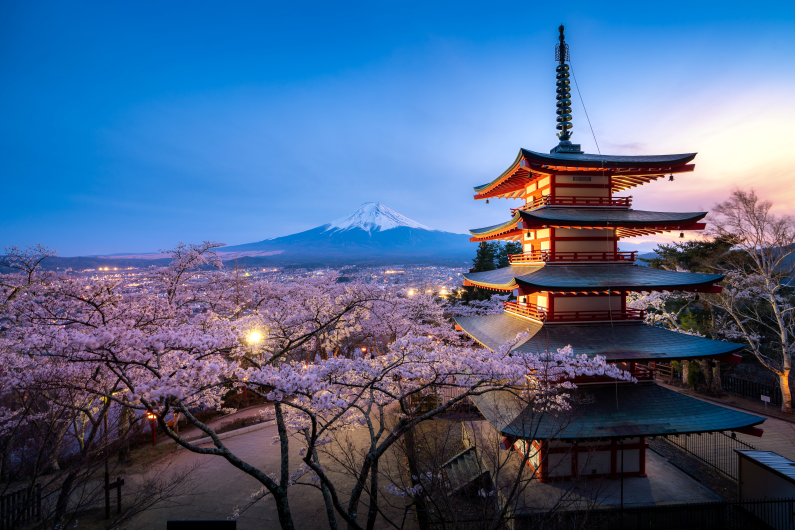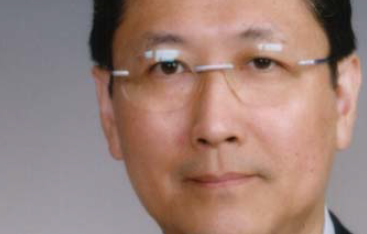A Global Giver Lends Support from Japan
With a successful medical career in obstetrics and gynecology, Kenichi Furuya also spends his time advancing science as a member of the Academy’s Darwin Society.
Published March 1, 2009
By Adelle C. Pelekanos

At the core of The New York Academy of Sciences’ (the Academy’s) mission is a commitment to “creating a global community of science for the benefit of humanity.” It is a statement that deeply resonates with the Academy members from 140 countries – including Darwin Society member Kenichi Furuya. For this Japanese researcher, the Academy membership is one important way to bridge the distance between Tokyo, New York City, and other international hubs of science.
Furuya, a specialist in obstetrics and gynecology, holds both an MD and PhD. He is a professor and Chairman of the Department of Obstetrics and Gynecology at Japan’s National Defense Medical College. In addition to his association with the Academy, Furuya is a fellow of the International College of Surgeons (headquartered in Chicago) as well as a number of Japanese medical societies. He was born in Tokyo in 1953, and still lives in a central area of the city, Bunkyoku.
A Proud Scientific Tradition
Furuya graduated from the School of Medicine at Japan’s Juntendo University in 1979. He recounts his alma mater’s history with pride: “Our medical school was founded as one of the oldest western-style private hospital/schools in Edo City (Tokyo), in 1838,” during a period of national isolation. Thirty years later, Japan’s Meiji Revolution opened the country’s doors to the West, Furuya explains. Juntendo’s third president, Susumu Sato, was the first Japanese student to study abroad officially, and since the late 19th century the school has encouraged international education and collaboration between researchers. Furuya is a product of this tradition, as evidenced by his active membership and generous support of the Academy.
In the almost 30 years since graduating from Juntendo, Furuya has worked in various areas within obstetrics and gynecology, including basic molecular research, reproductive immunology, clinical reproductive medicine (such as IVF- ET and laparoscopic surgery), and clinical pelvic surgery (such as ovarian and uterine cancers).
In his current work, Furuya focuses on two areas of gynecological research. First, he is studying the mechanisms by which the fetal period of pregnancy (week 10 through birth) affects the development of metabolic disorders in children. In particular, Furuya is interested in diabetes, obesity, and hypertension as epigenetic influences of this period, in pregnancies complicated by placental malfunctions such as gestational diabetes mellitus, nutritional deficiency, and pregnancy-induced hypertension.
Secondly, Furuya is working to clarify the basic mechanism of the relationship between ovarian endometriosis (EM) and ovarian cancer. Epidemiologic findings indicate a strong positive correlation between ovarian EM and ovarian clear cell carcinoma characterized as “refractory,” or resistant to chemotherapy, he explains.
It Runs in the Family

Furuya’s family, past and present, shares the doctor’s dedication to medicine. Furuya’s wife is an anesthesiologist, his son is an obstetrics-gynecology resident, and his daughter is in dental school. His late father, Hiroshi Furuya, was a gynecologist and emeritus president of the Society of Tokyo Maternal Health. In the 1970s, the elder Furuya was a visiting professor at Germany’s Hamburg University, as well as Columbia University. Furuya not only inherited his father’s vocation, but also his passion for participation in the global science community. It was his father’s status as an Academy member during his time at Columbia that inspired Furuya to become a member 20 years later.
Support in an Important Time
Furuya’s proud support of the Academy conveys his passionate support for scientific collaborations across the globe, and in particular, between the US and Japan. With the new presidential administration, Furuya believes that the American society may be undergoing its “fourth revolution”—identifying the first as the American Revolution, the second as the Civil War, and the third as the end of World War II. “I have been impressed indeed that [the US is changing its] basic social, political, and historical foundations,” Furuya explains. He likens this period in American history to his own country’s Meiji Revolution, the time that ushered in new world views and sparked international dialogue between Japan and the world. Furuya’s long-distance membership is his vote of confidence in the current and future relationship between the US and Japan.
Although Furuya has traveled to New York a number of times, he has not been to the new Academy headquarters at 7 World Trade Center. He plans to visit in the near future, and to continue his support of the Academy. “It is my great honor to support the activities of The New York Academy of Sciences given its long history and many pure science traditions,” Furuya says.
Also read: Changing the Face of Molecular Medicine
About the Author
Adelle C. Pelekanos is a freelance science writer in New York City.
